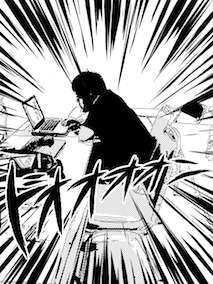
|
By Graham K. Rogers

One of the main tasks I have is to teach students writing skills. This does not (or should not) entail boring lessons on grammar - the students have had years of such instruction. I tend to focus on the actual production of text. With several of the groups, I use the project proposal as a starting point. They have to write one anyway for their senior year projects and they will discover information about the technology they must use as the writing progresses.
Students are aware of my use of consumer technology. In the classroom, I run presentations using the Mac or iPad or sometimes the iPhone. I am often ahead of them, particularly with the use of software, with the hardware related to my Macs and iOS devices, and with up to date information.
 Most of my students use PCs with different versions of Windows installed. A few have Macs. Many use iPhones or Android devices. This week there were a couple of surprises.
Most of my students use PCs with different versions of Windows installed. A few have Macs. Many use iPhones or Android devices. This week there were a couple of surprises.
As my MacBook Pro was away (my fault) I had the spare iMac carried into the classroom because the students needed to give me files for a movie project. This is a Mid-2007, 20" model, so is not exactly cutting edge, although it still looks good. There was some interest expressed in the Mac, particularly when they saw the speeds that files were being transferred at.
They asked about the cost of current models. I was able to give the figure for the basic iMac as a friend was asking about this a couple of days ago and we checked the online store together.
I reminded the students too that they would probably be eligible for an education discount. As there is a uStore on campus, they could try there. Online purchases would need a credit card.
Evolution
The writing process in my classes has an emphasis on evolution and consultation. I start with the need for a plan, then we move on to writing drafts. For my students, the hardest part is Draft 1 as I impose a number of rules: maxiumum length of a sentence is 10 words; no conjunctions; no contractions; and no outside information.
Consultation
The second string to my bow is consultation. A classroom and lecture format may not be the best environment in which writing can be taught in a practical way. Instead, the students writing the proposals (in small groups) prepare work and come to my office (usually) for guidance. As we go through the drafts - sometimes several for each group - I advise and make suggestions, sometimes verbally, sometimes with written comments on the pages.
The main problems that Thai engineering students (and others) have are in a few basic areas:
- Subject-verb agreement (if the subject is singular, the verb is singular): quite simple and something they have all been taught at high school. When reminded, I usually see a sheepish grin.
- Verb problems. As with subject-verb agreement, the basics have been forgotten (perhaps never reinforced) and there are often problems with verb tenses (this is cultural too) and the choice between active and passive voice.
- Translation is a problem at both the sentence level (above) and with individual words. The Thai word for "Make" can also be translated as "Build" or "Do"; while the Thai word for "Sound" is also the same word for "Voice". Thief and Steal are the same, and only context in Thai indicates the difference between the noun and the verb. This is the tip of the iceberg.
- A concept that Thai students are never taught is the difference between countable and uncountable nouns in English. From that comes the decision as to whether a noun is singular or plural (and hence affects the verb); and, further, the choice between non-specific or specific: no article, "a/an" or "the".
There are no plurals as English speakers understand: the concept for Thai speakers works by classifiers. Instead of 2 taxis, the Thai would be similar to "taxi, two cars" (2 books: book, two editions, and so on).
As native speakers, we may be able to make such decisions in nanoseconds, but this may take a while to digest for a student who is already under pressure.
Without doubt I do push the students, and in many cases the response is good. Those who try hard, earn my respect. I am not after perfection (although that would be nice), but effort. I hope that some of the comments stay with them for the future, when they will need to write complex papers or reports, either in a job or as graduate students.
 On some occasions, the comments I make may be difficult for students to grasp all in one go, so a repeat session will almost certainly be needed, however this week I was pleased to see a novel approach used by a class of Civil Engineering students.
On some occasions, the comments I make may be difficult for students to grasp all in one go, so a repeat session will almost certainly be needed, however this week I was pleased to see a novel approach used by a class of Civil Engineering students.
While I was commenting on the work, a student recorded my words using an iPhone. After their session had finished, I heard my voice and saw them going through the paper again, linking my ideas to the marks on the paper.
A couple of days later, a group of Electrical Engineers tried the same. As I was aware of what they were doing, for the first minute or so I was almost silent - teasing them - with the occasional, "mmmm," or "aha"; then I made comments in the normal way.
I like the way the students used their smartphones to combine the old with the new - my analog comments, with a digital recording - so that they would be able to take more from the consultation than students may have in the past. When I write notes on a board these days, several students may take pictures with their iPhones (or other things) for further reference.
At least they are taking notice (if not taking notes).
Graham K. Rogers teaches at the Faculty of Engineering, Mahidol University in Thailand where he is also Assistant Dean. He wrote in the Bangkok Post, Database supplement on IT subjects. For the last seven years of Database he wrote a column on Apple and Macs.
|

|




